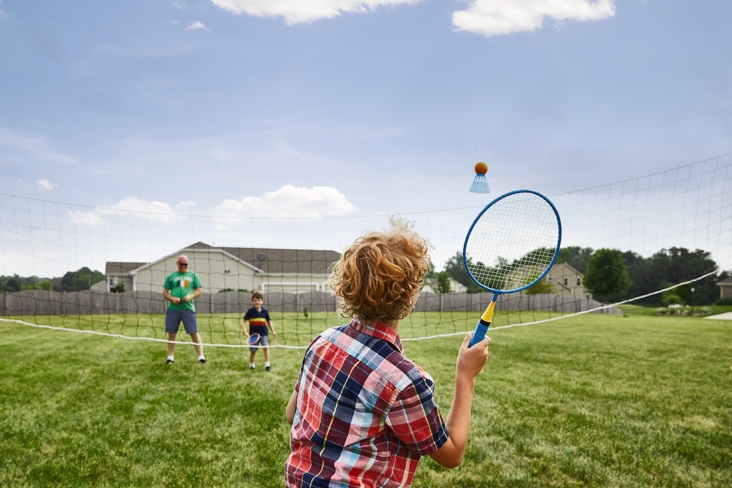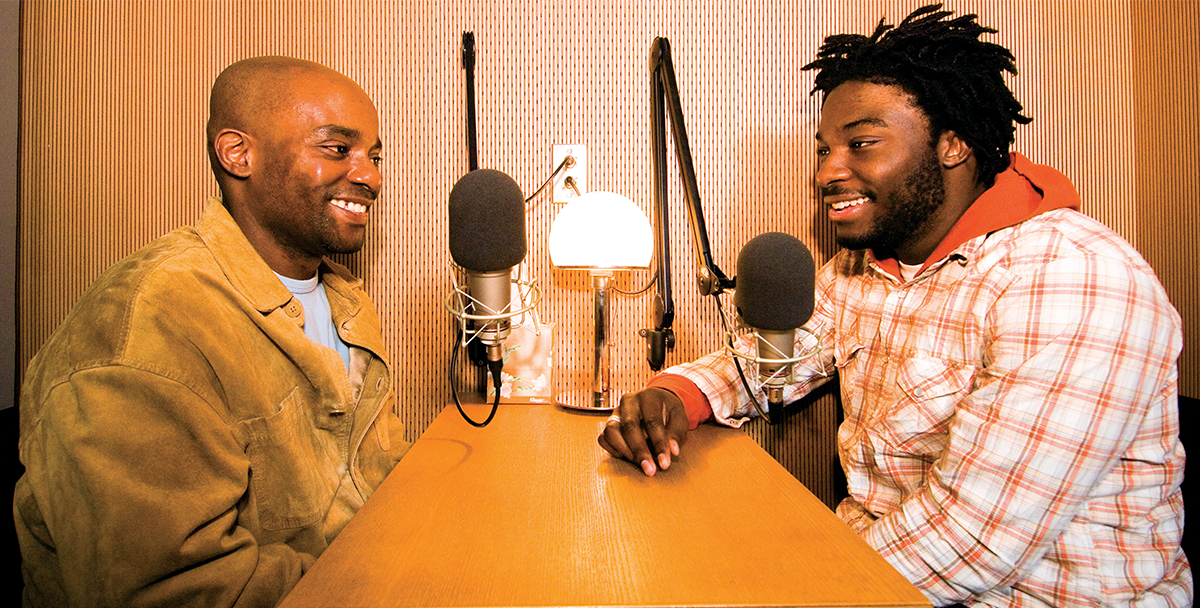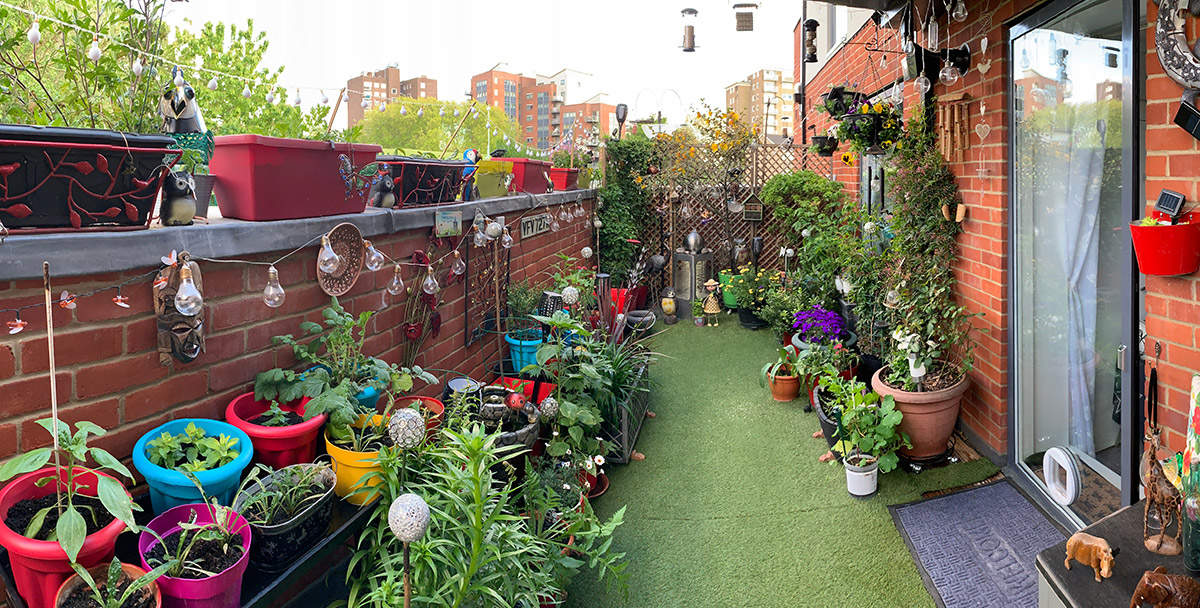For countless people of all ages, favorite summer memories include whiling away long afternoons in the backyard, frolicking in the surf at the beach or kicking a soccer ball around the field. Such great memories tend to have one thing in common: a beautiful day and outdoor fun to soak up every minute of the season.
In addition to being a whole lotta fun, playing outside helps kids socialize and build strength and cardiovascular fitness. And studies have shown that when kids are more physically active at home, they’re more likely to be active when they go back to school – which is linked to all sorts of learning and developmental benefits. Why not get the entire family involved? There’s a whole new class of outdoor lawn games – plus updates to classics – that everyone can enjoy.
In the spirit of summer, we present eight great games to inspire you.
Jenga®1 Giant™
Anyone will get a kick out of this classic table game blown up to build the excitement. The jumbo-size blocks stack more than 4 feet high, but they can go upwards of more than 5 feet with a booster pack.
Play is deceptively simple once you create your Jenga tower – just pull one block out and place it on top of the pile during your turn. But beware: the pile gets more and more precarious as you go! When a player topples the tower or causes a block to fall, he or she loses, and the game is over, but see how quickly everyone can put it back together. You can play solo, or groups can get in on the action.
The makers of Jenga sell a variety of sets that can be found at stores or online. But if you’re handy with tools, you could also make your own game with ¾-inch plywood, cut to a uniform size, sanded and finished. A standard set includes 54 equal-size blocks.
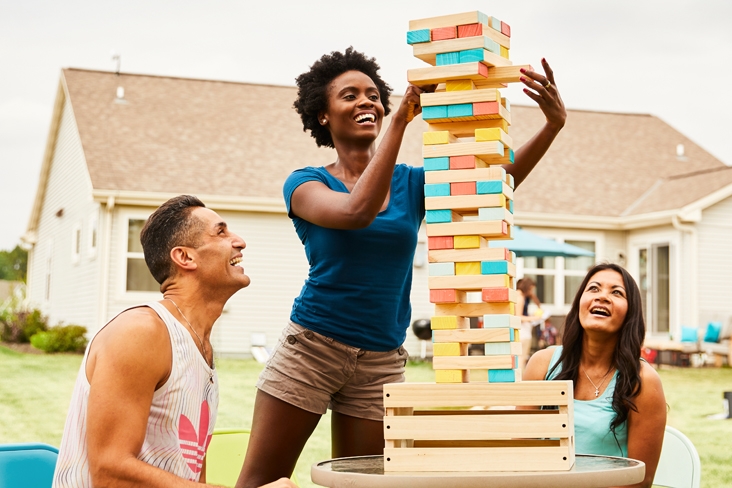
Spikeball®
Nothing will get your crew moving quite like Spikeball, which is described by the makers as a mash-up of volleyball and four square. All you need are three Spikeball balls, a net that looks like a miniature trampoline and plenty of space. Generally playing in two teams of two, you set up on opposite sides of the net. Play begins when one player serves the ball down into the net so it bounces up at the opposing team. The two players then have three hits between them to get the ball back to the net.
Things get really interesting once the ball is served. There are no set sides for each team, so players can move 360 degrees around the net during play and hit the ball in any direction. Points are scored when the other team hits the ball into the ground or rim of the net, or it bounces more than one time on the net. You can play to any set score, and the winning team must win by at least two points.
The makers of Spikeball also suggest adjustments for newbies and more advanced players. Rookies can throw and catch the ball off the net or pass and spike it between players, and you can even play one-on-one to really get your blood pumping!
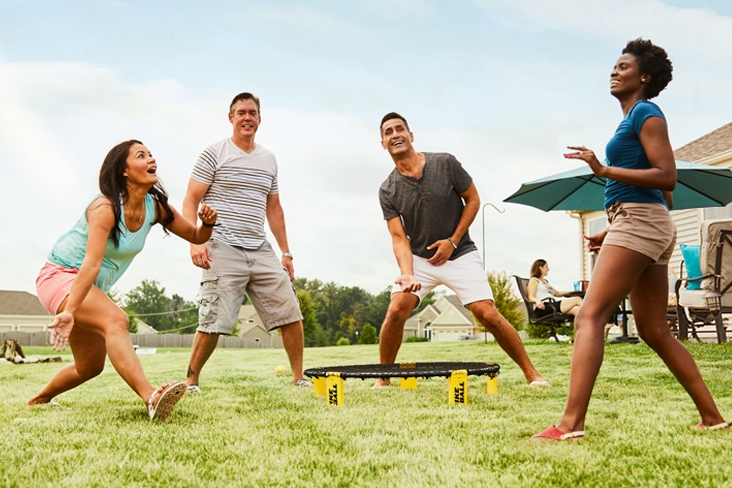
Quoits
Bored with horseshoes? Try Quoits, pronounced “kwaits," a similar game with a livelier name, popularized in eastern Pennsylvania and western New Jersey. Designed for two players or two teams of doubles, it involves players alternating turns by tossing or “pitching” a rubber ring (or “quoit”) onto or near an upright peg. The peg, or “hub,” sits at the center of a slanted board 18 feet away. Each team pitches two rubber quoits, and you earn points depending on where your quoit lands. For example, encircling the hub – a ringer! – is good for three points; leaning up against the hub equals one point; and pitching your quoit completely off the game board gets you nada. To win, a team must reach 21 points. For a full scoring chart and helpful pitching tips, head over to Quoit Factory.
Giant Dice
With giant dice, the options are endless. Whether you’re trying to see who can roll the highest number or teaching simple math through play, there are all sorts of rules you can come up with to make dice fun – and keep kids rolling and chasing the giant cubes.
For the game Round the Clock – where you have the option to use the value of one die or both combined – players must roll a one to pass their first turn, a two on their second and so on until they reach 12. To make things a little more complicated, you can try the popular game Going to Boston. In Going to Boston, each player starts by rolling three dice and setting aside the die with the highest number. The same is done with the remaining two dice, then the final die, and the sum of the three is your score for the round. The winner has the highest total at the end of the agreed-upon number of rounds, or is the first to reach a preset total.
Did you know?
Dice, considered the oldest gaming implements known to man, have been used for centuries. During ancient times, they were made from bone or shells and used for divination.
In another popular game, Pig, players roll a single die rather than two. During each player’s turn, he or she can keep rolling and accumulating points – as long as a one doesn’t pop up – or choose to end the turn. If a player rolls a dreaded one, the turn is over, no new points are scored, and play passes to the next person. The first to reach 100 wins!
You can find lawn dice online or make your own with materials you might already have around the house. For example, just wrap a cube-shaped box in red or white heavyweight wrapping paper, and glue on circles from one to six in a contrasting color on each side. Then let the dice roll and the fun begin!

KanJam
If you love disc golf but wish you could get a little help with your accuracy, you’ll love KanJam. Originally called “Garbage Can Frisbee®,” this game is played with two teams of two, two flying discs and two goals (“kans”) spaced approximately 50 feet apart. Your partner stands across from you at the opposite kan, and as you throw the disc, he or she is ready to “deflect” – i.e., slam or push the disc toward the kan using only one hand. (You take turns as the thrower/deflector, and teams alternate turns.) If your partner deflects your throw into the side of the kan, you earn one point. If you hit the side of the kan without help from your partner, you get two points. If your partner deflects the disc into the top or front slot of the kan, you rack up three points. And if you throw the disc into the top or front slot of the kan without assistance, you win instantly! No points are awarded if the disc hits the ground before reaching the goal. The first team to reach 21 points wins. Check out KanJam Klassic.
Bags
Alternately known as cornhole and bean bag toss, bags is a classic tailgate and backyard game that doesn’t require a ton of space. While the American Cornhole Association (ACA) dictates that there be 27 feet between boards, you can set up a smaller court for littler players and shorter tosses.
You can play one-on-one or team up in doubles. ACA rules say that players must remain within the “pitcher’s box,” a space roughly even with the length of the board and extending 3 feet on either side. On their turn, players toss the bag underhand without stepping out of the pitcher’s box. Bags that land on the opposite board are worth one point, and bags that go into the hole on the board garner three points. Players from each side alternate, giving them a chance to knock any stray bags off the board or into the hole before all the bags are thrown. The game continues until one side reaches or exceeds 21.
You can purchase bags online from the ACA or other game makers, DIY, or you could even do a little of both: Find plain boards online and add your own designs, or buy colorful fabric and sew your own bags to personalize your set.
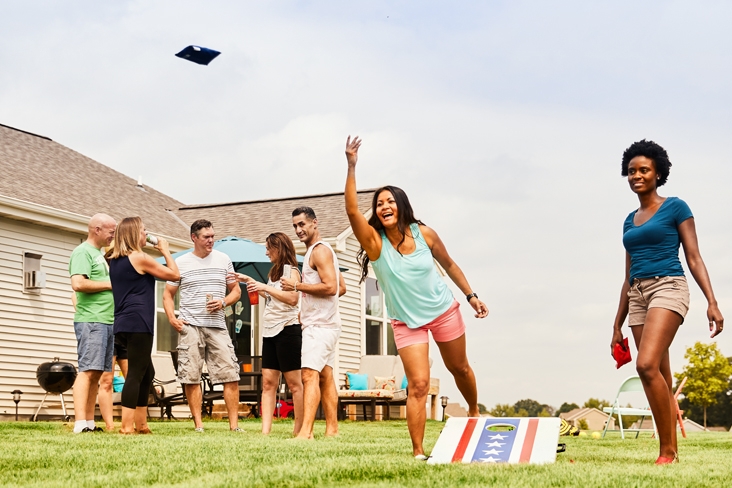
Kubb
If you’ve ever spotted a group of people in a park throwing wooden batons at wooden blocks, you’re witnessing a Nordic lawn game called Kubb (pronounced “koob”). Also known as “Viking chess” (game lore suggests that Vikings played a version of it), you’re most likely to see it in Eau Claire, Wisconsin, aka the “Kubb Capital of North America.” The game is played by two teams, with one to six players per team, in a 5-by-8–meter “pitch.” Five wooden blocks (or “kubbs”) are placed on each baseline; the “king” block is placed in the center; and each team has six batons to toss. The goal is to try and knock over the opposing team’s baseline kubbs (once knocked over, they’re tossed back and become a new target, or “field kubbs”) and then, ultimately, to knock over the king. If you knock over the king before any baseline or field kubbs, you instantly lose and feel like a real, uh, blockhead. For more Kubb rules, visit Kubb United.
Badminton
Older kids will love a rousing game of backyard badminton. You’ll need plenty of space to set up a regulation court, which is roughly 44 feet long by 20 feet wide, but if you’re not worried about following tournament rules, any rectangular space should do. A standard net is just over 5 feet high, and you’ll need badminton rackets and a couple of shuttlecocks to go with it.
Did you know?
Badminton’s origins come from “battledore and shuttlecock,” a game that used small rackets called battledores, and shuttlecocks, or birdies, each made from a cork with 16 or more overlapping feathers.
Play one-on-one or split up into doubles. The game is a mix between tennis and volleyball, with one player or team serving, and then both sides attempting to keep the shuttlecock aloft for the length of play. Each side may hit the shuttlecock only once to get it over the net and, while serves must be underhand, you can hit any way you like after the rally gets going. You score a point on your turn if the other side lets the shuttlecock hit the ground or hits it out of bounds, and games go to 21. In a time crunch? Play to a lower number, such as 15.
You can pick up badminton sets at your local sporting goods store or online to get started!
